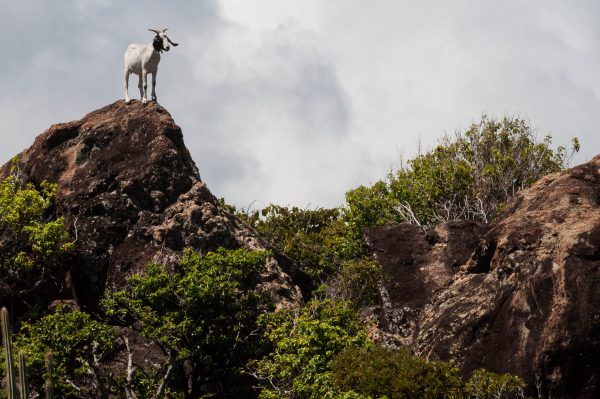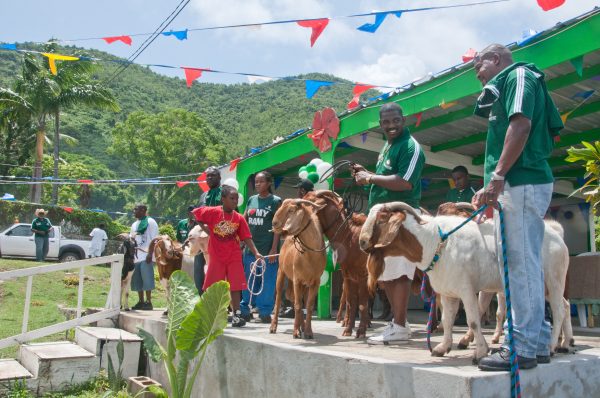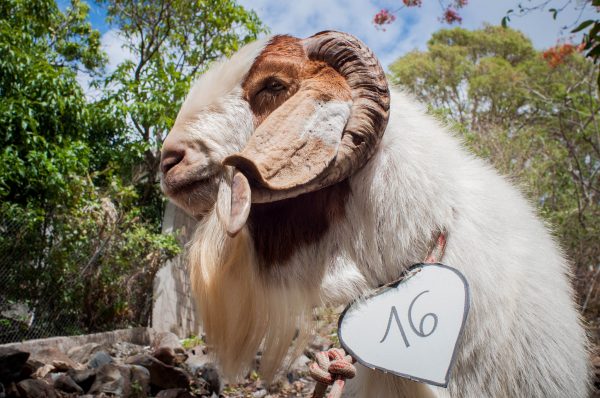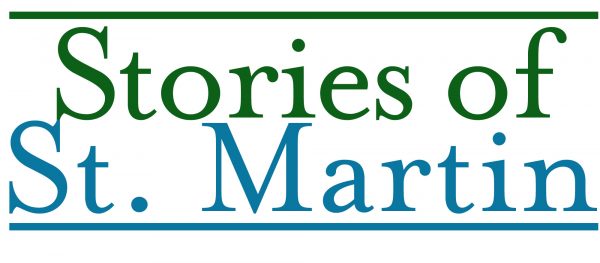A half-century of very rapid growth and modernization has changed many things on St. Martin. Farmlands have been developed and the economy has tilted toward tourism. But goats remain.
Goats make sense on St. Martin. They are one of the best animals for places that are dry, or seasonally dry. They require less space than a cow and they are less picky about what they eat. There are plenty of breeds that are well-adapted to the tropical heat.

Goats have a long history in the Caribbean. Goats were brought by the Spanish in the 1500s. Over the years, these so-called Spanish goats became what we call Native or Creole goats.
What makes a great Caribbean goat? The Creole goat is hardy. It can survive dry conditions and find food on barren hillsides. These traits make them easier to care for. They are also able to breed during the dry season. Creole goats can give birth three times every two years, rather thang just once a year. That’s good if you want more goats. Creole goats are also known for having great-tasting meat.

Caribbean Creole goats are the result of natural selection and selective breeding. Goats left on their own adapted to local conditions over hundreds of years. Breeders also crossbred the original Spanish goats with other breeds. In more recent times, breeds like Nubian and Boer became popular in the Caribbean because they are larger and grow faster. Crossbreeding Creoles with these newer breeds is common today.
By comparing DNA, we are able to learn more about Creole goats. We can see that they are different from other breeds and even have differences from island to island. At the same time, Creole goats are at risk. On many islands, only a small percentage of goats are pure Creole.

Creole goats deserve saving. They are part of local culture. Their survival abilities may also become more valuable as climate change transforms many parts of the world. If raising goats dies out on St. Martin, the island will be changed for the worse.
At the same time, the Caribbean needs spaces without goats. Goats are not native and they can damage delicate habitat. Removing them from wild spaces, like offshore islands, allows nature to flourish. When goats were removed from the island of Redonda, the barren landscape burst into bloom. After hundreds of years suffering at the edge of survival, the goats were brought to Antigua. There they can live in relative luxury, while their drought-defying talents can be studied. Perhaps other goats from wild areas can be brought back into captivity to boost Creole goat populations.

What are your thoughts on goats? Share them by writing in to The Daily Herald or to info@lesfruitsdemer.com.

